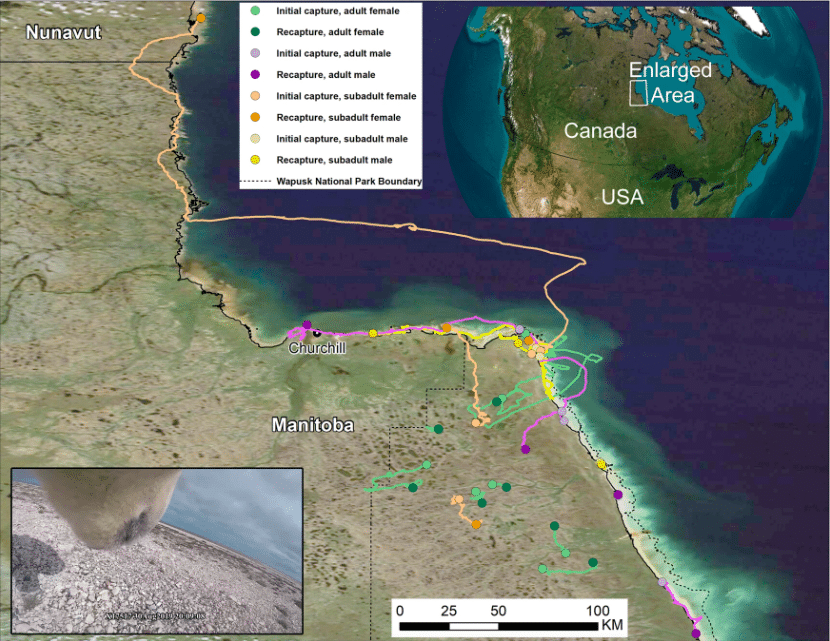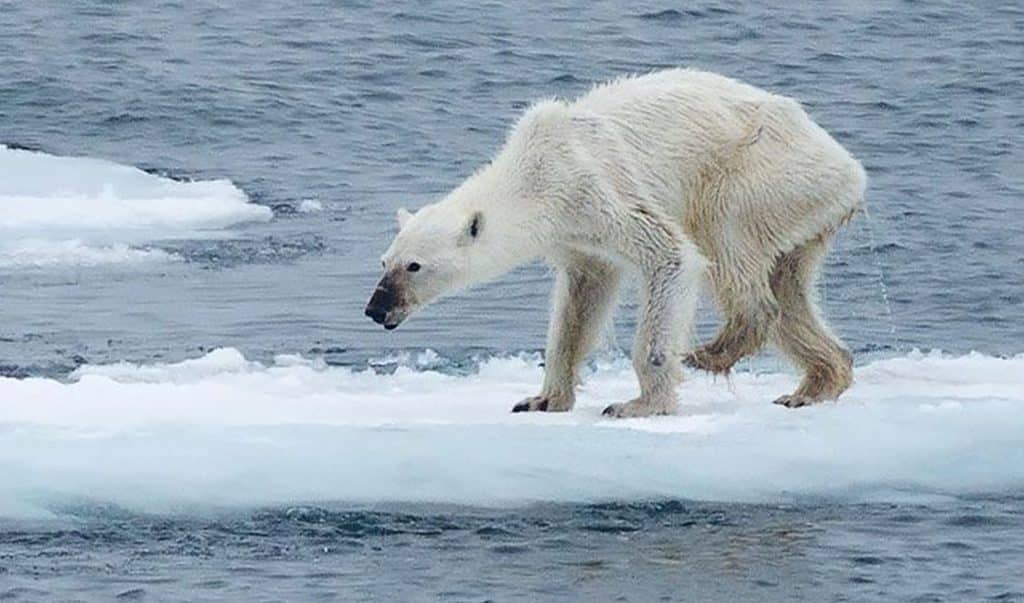With the Arctic sea ice cover shrinking rapidly, polar bears are forced onto land for longer periods, risking health degradation and starvation.
—
Polar bears face starvation as ice-free periods in the Arctic increase as a result of global warming, new research has found.
Published earlier this month in the scientific journal Nature Communications, the study used video camera GPS collars to track polar bears movements for three-week periods over the course of three years in Canada’s Hudson Bay, an inland marginal sea of the Arctic Ocean. Here, ice-free periods have lengthened by three weeks between 1979 and 2015, forcing bears onshore for approximately 130 days during the past decade.

Polar bears rely heavily on sea ice for many activities such as travelling, resting, mating and, of course, hunting. Their diet consists mainly of seals as they require large amounts of fat to survive the cold climate. They can eat up to 10 to 20% of their entire body weight thanks to their giant stomachs, with their bodies being able to use about 97% of the fat they ingest. These massive mammals eat at least 50 seals a year but because of the annual melting patterns of the sea ice, they can now only hunt from November to July.
When ice melts, polar bears come ashore, where they either look for other food sources or rely on fat storage until the ice refreezes.
“Polar bears are creative, they’re ingenious, you know, they will search the landscape for ways to try to survive and find food resources to compensate their energy demands if they’re motivated,” Anthony Pagano, a research wildlife biologist with the US Geological Survey and lead author of the study, told AFP.
However, as the new analysis suggested, bears’ ability to adapt to new conditions is no guarantee of survival.
“Although polar bears on land exhibit remarkable behavioral plasticity, our findings reinforce the risk of starvation, particularly in subadults, with forecasted increases in the onshore period,” the study read.
The Arctic is heating up twice as fast as anywhere else on the planet, shrinking sea ice cover by 14% per decade. Compared to the median sea ice cover recorded between 1981-2010, the region has lost about 770,000 square miles between 2011 to 2021, an area larger than Alaska and California combined.
As bears spend longer periods without food, their health declines. According to the World Wildlife Fund (WWF), for every week earlier that the ice breaks up in Hudson Bay, bears come ashore roughly 22 pounds (approximately 10kg) lighter and in poorer health condition.
Even those who survive starvation will suffer from heavy malnutrition, especially females with cubs. Unhealthy bears can lead to lower reproduction rates and extinction in certain locations. Scientists have found the main cause of death for cubs to be either lack of food or lack of fat on nursing mothers.
A 2015 reassessment by the International Union for Conservation of Nature (IUCN) showed that there is a high probability that the global polar bear population will decline by more than 30% over the next 35 to 40 years, while a 2020 study predicted that polar bears in the Arctic could go extinct by 2100 in a “business as usual” emissions scenario.
Featured image: Wikimedia Commons
You might also like: Arctic Giants in Peril: The Polar Bear’s Struggle Against Climate Change


















